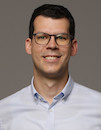Space Technologies
Data is displayed for academic year: 2023./2024.
Laboratory exercises
Course Description
This course introduces technologies used to build satellites: navigation, attitude control, space communications (radiofrequency, optical and quantum), ground communications and control segment and an overview of satellite development and qualification.
Study Programmes
University graduate
[FER3-HR] Audio Technologies and Electroacoustics - profile
Elective Courses
(2. semester)
[FER3-HR] Communication and Space Technologies - profile
(2. semester)
[FER3-HR] Computational Modelling in Engineering - profile
Elective Courses
(2. semester)
[FER3-HR] Computer Engineering - profile
Elective Courses
(2. semester)
[FER3-HR] Computer Science - profile
Elective Courses
(2. semester)
[FER3-HR] Control Systems and Robotics - profile
Elective Courses
(2. semester)
[FER3-HR] Data Science - profile
Elective Courses
(2. semester)
[FER3-HR] Electrical Power Engineering - profile
Elective Courses
(2. semester)
[FER3-HR] Electric Machines, Drives and Automation - profile
Elective Courses
(2. semester)
[FER3-HR] Electronic and Computer Engineering - profile
Elective Courses
(2. semester)
[FER3-HR] Electronics - profile
Elective Courses
(2. semester)
[FER3-HR] Information and Communication Engineering - profile
Elective Courses
(2. semester)
[FER3-HR] Network Science - profile
Elective Courses
(2. semester)
[FER3-HR] Software Engineering and Information Systems - profile
Elective Courses
(2. semester)
Learning Outcomes
- Explain the main elements of a satellite and their function in a satellite with a communications or scientific payload
- Describe the characterstic and compute essential orbital parameters for the most common types of orbits (GEO and SSO)
- Analyze energy requirements of a satellite energy system and apply them in the design of a satellite
- Analyze thermal requirement of a satellite, estimate average satellite temperature and apply in the design of a satellite
- Explain the operation of a communications system used to communication between satellite and Earth and the main elements of a link budget
- Explain the operation of the attitude determination and control system and determine optimal approaches
Forms of Teaching
Lectures
Live lectures
LaboratoryLaboratory exercises
Grading Method
| Continuous Assessment | Exam | |||||
|---|---|---|---|---|---|---|
| Type | Threshold | Percent of Grade | Threshold | Percent of Grade | ||
| Laboratory Exercises | 0 % | 10 % | 0 % | 10 % | ||
| Mid Term Exam: Written | 0 % | 45 % | 0 % | |||
| Final Exam: Written | 0 % | 45 % | ||||
| Exam: Written | 0 % | 90 % | ||||
Week by Week Schedule
- Introductory lecture (overview of space technology, applications, and thermal and mechanical satellite design)
- Attitude determination and control system
- Attitude determination and control system
- Attitude determination and control system
- Satellite communication technologies
- Satellite communication technologies
- Satellite communication technologies
- Midterm exam
- Ground station
- Ground station
- Navigation
- Navigation
- Earth observation
- Earth observation
- Final exam
Literature
For students
General
ID 222792
Summer semester
5 ECTS
L0 English Level
L1 e-Learning
45 Lectures
0 Seminar
0 Exercises
6 Laboratory exercises
0 Project laboratory
0 Physical education excercises
Grading System
87 Excellent
75 Very Good
62 Good
50 Sufficient


 Pristupačnost
Pristupačnost

